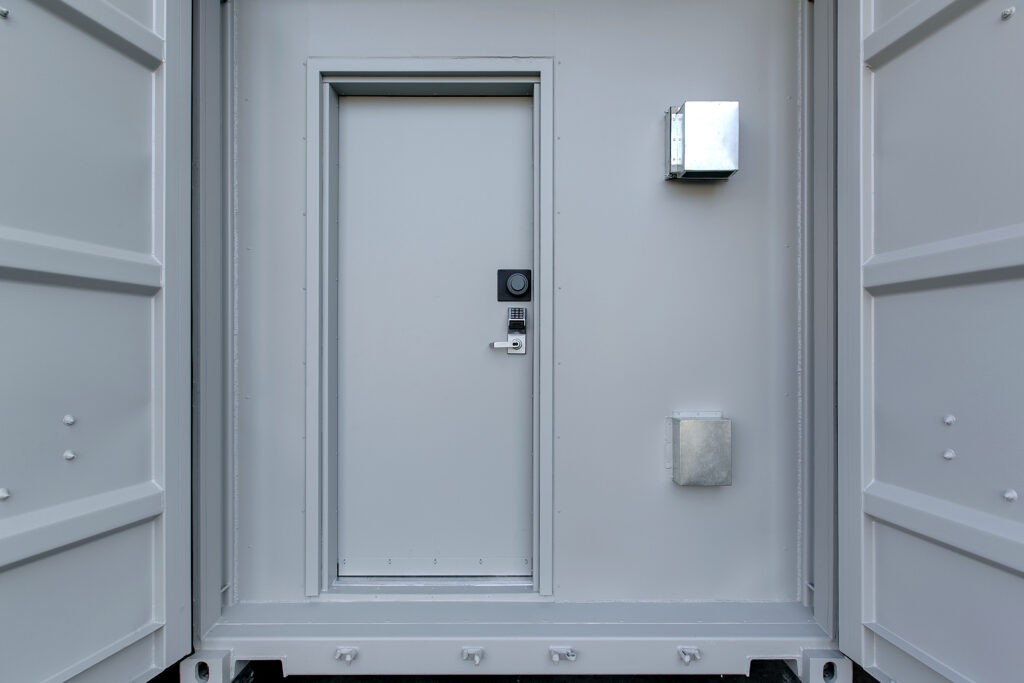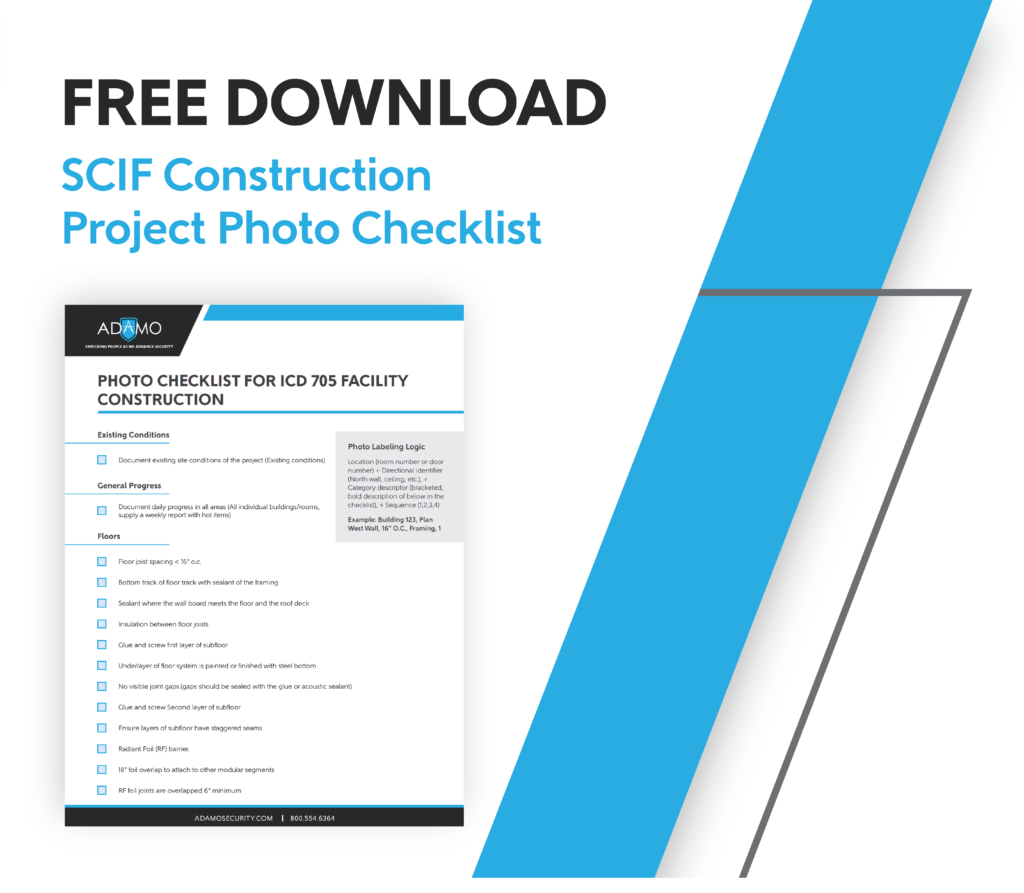What makes the spin-dial lock for SCIFs different from commercial locks?
When constructing a SCIF or SAPF, layers of security are incredibly important for the facility’s Security in Depth (SID). One of the most crucial layers is the primary entrance door, since it is the first defense against unauthorized people trying to breach the facility. Because of this, the standards for the door hardware are very strict, and very few pieces of equipment are approved for use in SCIFs, especially for the required spin-dial lock.

How is a SCIF Lock Different?
A SCIF spin-dial lock is not wildly different from many locks commonly used in commercial settings, but they do have increased security, strength and sophistication. For a secure facility, the locking hardware need to meet Federal Specification FF-L 2740. These locks are used on NISPOM open storage areas, SCIF and SAPF primary entrance doors and any GSA-approved containers that store classified information. They will not be used on any other doors within the facility, even in situations where there are separate compartmented areas that only certain people can access. SCIF locking hardware is made to be compatible with other types of authentication. SCIF entry requires two-factor authentication, whether that be in the form of an ID badge, PIN or thumbprint.
SCIF locking hardware needs to be digital rather than mechanical. This makes them significantly harder for someone to be able to open without the code. With a mechanical lock, someone could drill into it and use tools to pick the lock, but this isn’t possible with the digital lock.
The lock by itself costs approximately $1,300 these days, though you will need to also purchase housing for it, which drives the cost up to approximately $2,000. The housing includes the handles, latching and key housing. Unlike most things in SCIF construction, spin-dial locks are a relatively simple component of the facility since there are so few approved options. You don’t have to worry about an AO not approving your choice or designers debating what material would work best like you might in areas like wall construction.
How Does it Work?
The spin-dial lock only needs to be armed when the facility is unoccupied. Because of this, only the first person to the facility will need to disarm the lock and the last person to leave will arm it. A spin-dial lock should not be used for regular entry to the facility.
When using a digital spin-dial lock, you will spin it repeatedly to the left, or counter-clockwise, until numbers appear on the display. This powers the lock so you can enter your code. Codes for these locks are three numbers. Once the lock is powered, turn the lock to the left until you hit the first number, to the right, or clockwise, for the second, and to the left again for the third, pausing after reaching each digit of the code. Then turn the dial to the right for a final time until “OP,” for open, with a right arrow appears on the screen and the door bolt retracts. The lock will power down after 40 seconds if it stops moving. To close the lock, turn the dial to the left for a complete revolution to extend the bolt, wait three seconds and spin it to the right for a complete revolution to ensure it’s locked.
When the spin-dial lock isn’t open, the other elements of access control, such as a badge reader or scramble keypad, won’t be able to allow access to the facility. Ultimately, the front door to a secure space is one of the most basic things that needs to be secured, and the DoD has decided that the Kaba Mas X-10 and Sargent and Greenleaf (S&G) 2890C are the locking hardware that will get the job done.
If you have more questions than answers on how to get your SCIF or SAPF project from the planning stage through to accreditation, Adamo can help. Our technical consultants have a 100% accreditation rate and can partner with your team to give you the confidence to sail through your project.




